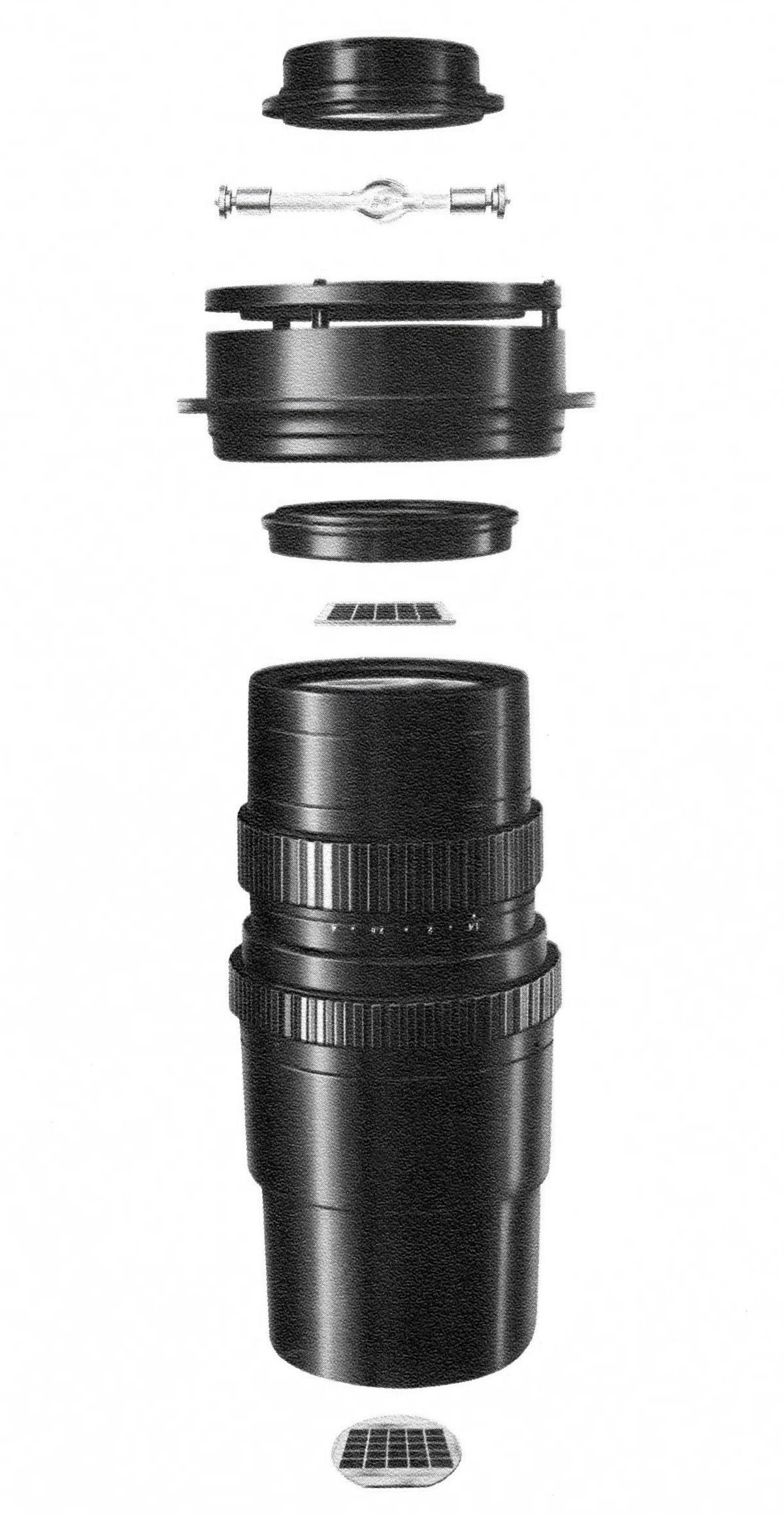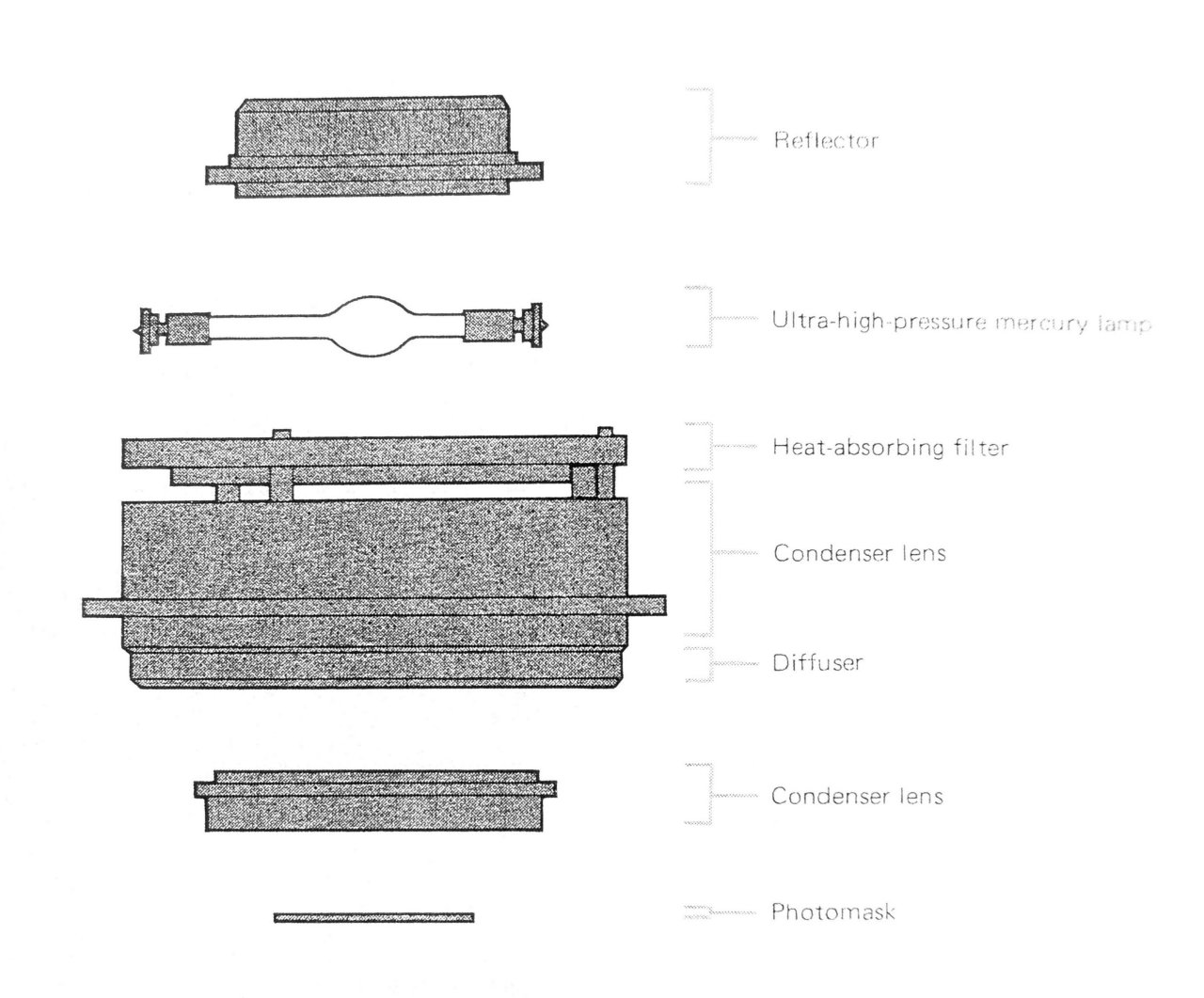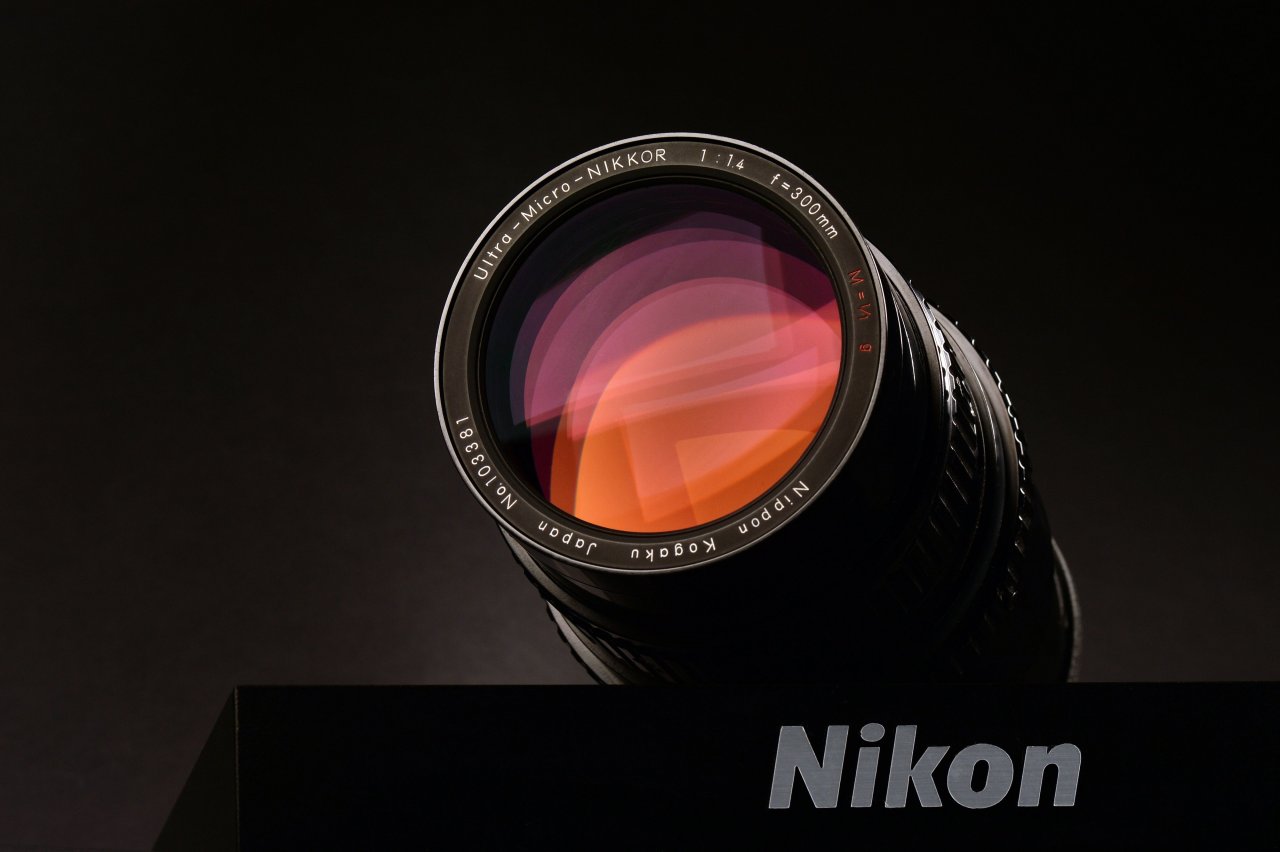
Ultra Micro Nikkor 300mm F1.4g
Lens in the Box Luxury Ultra Micro Nikkor 300mm wooden box is the biggest I have experienced so far, with dimensions 19 x 34.5 x 17 cm. On the other hand overall size is not that big, but surprisingly very heavy, almost as a golden brick. If you try to lift it for the first time, you are shocked how heavy such "little" box is. It weights over 14 kg (14.23 ) which is 31.4 pounds! Imagine that the Nikkor 1200-1700mm Super Zoom is 16kg in comparison.
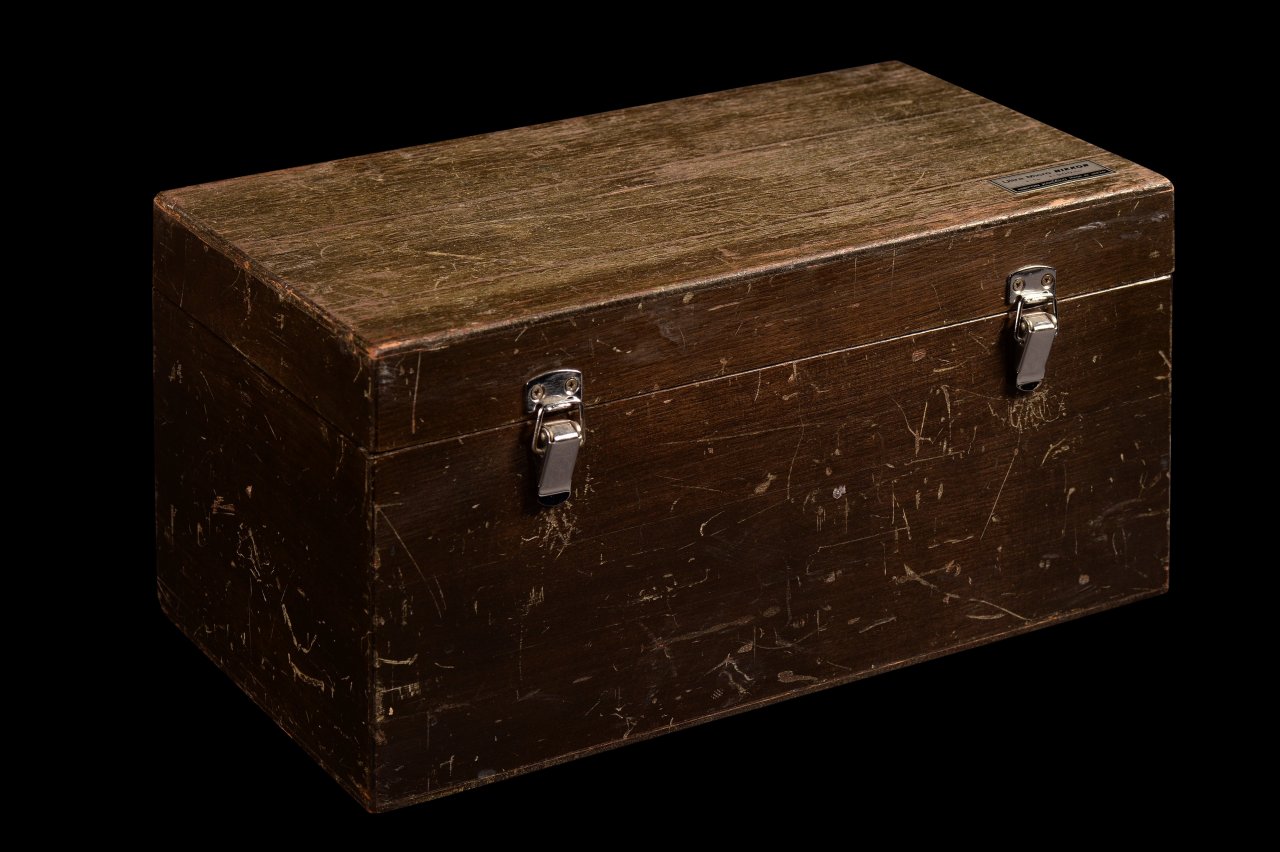
Luxury Ultra Micro Nikkor 300mm Wooden Box
All the scars on the box show how much this precious Nikon optical diamond has travelled in his life since it was born in early 70's. When the lens case came for the first time to me, it was all broken, and I have to admit, that the diamond inside was feeling too tight and made its own space while on the way.
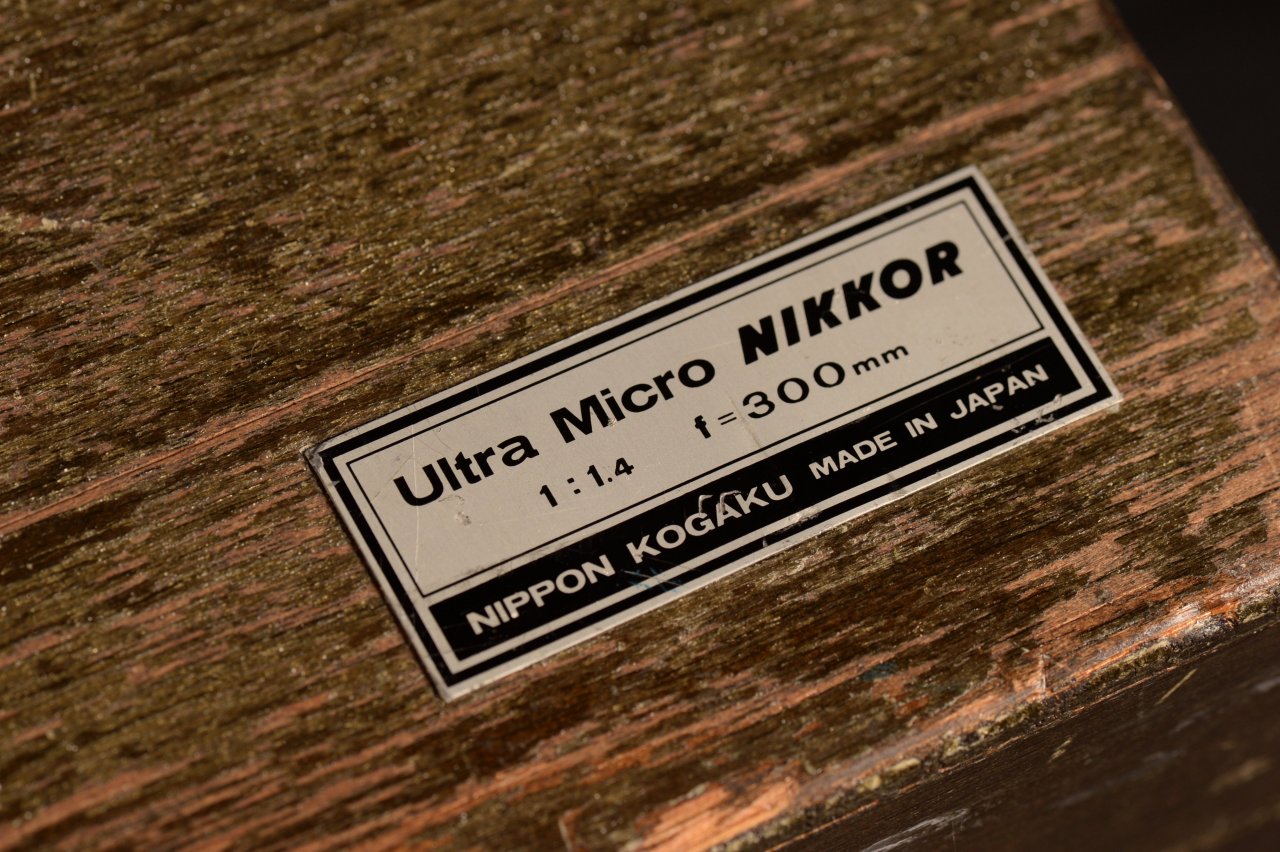
Nikon Optical Diamond in the Box
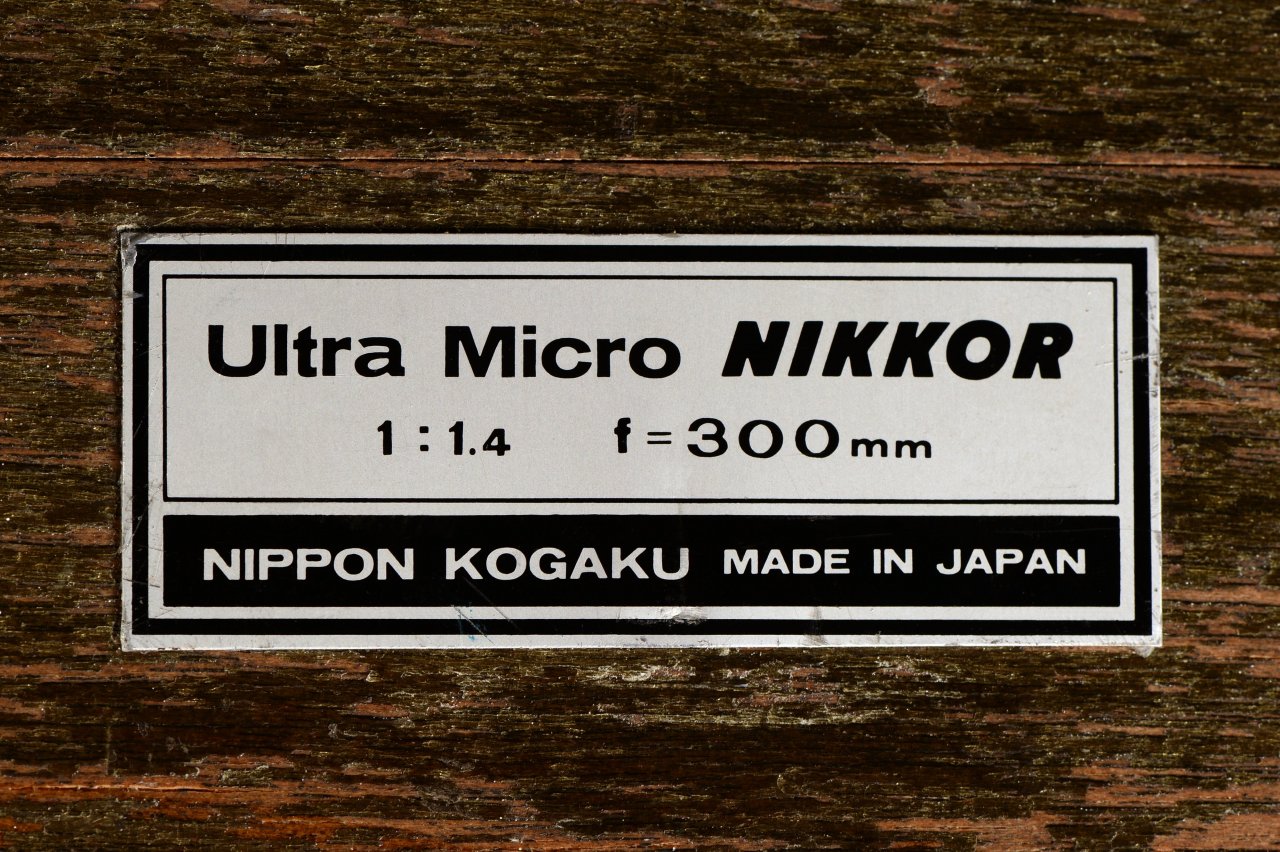
NIPPON KOGAKU MADE IN JAPAN
UMN 300mm F1.4g diamond is a true heavy load. Lens itself weights 11,5 kg which is 25,4 pounds ! To lift the lens out of the box is not easy task. Lens body seems to be filled with glass on the way up, like a thirsty light gourmet. Handling with this exquisite glass marble is a game with nerves, since you do not want to drop it. Ultra Micro Nikkor 300mm F1.4g Sweet sixteen, that is what one can recall, when one sees this beauty. So many precious lens elements are stuffed in this pure optical light capture ecstasy. For the special nikkor lenses connoisseur, this is absolute delight. Heavy load for the best light combat.
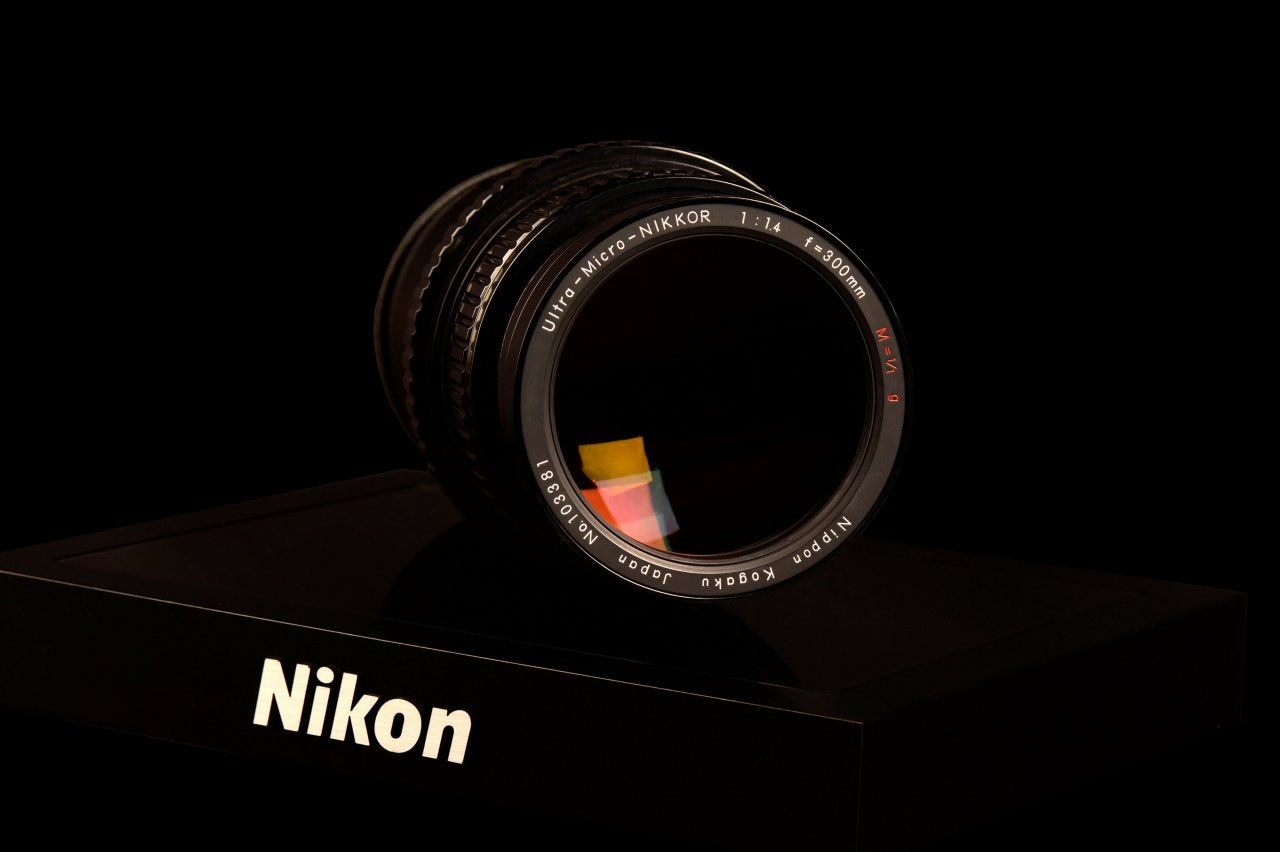
Sweet Sixteen
With this optical armory, light can only pass with submission and no detours on the way to the image projection stage. All lens elements were given a multilayer coating to prevent stray light caused by inside reflection and make the image contrast higher. Because of this coating the amount of harmful reflected light at each surface was reduced to about 0.1% at both e and g line. Compared to a lens with a single layer coating, image brightness was increased about 30% and image contrast was also improved a great deal. Such Optical achievement was acquired after decades of Nikon's optical research and experiences in various optical fields.
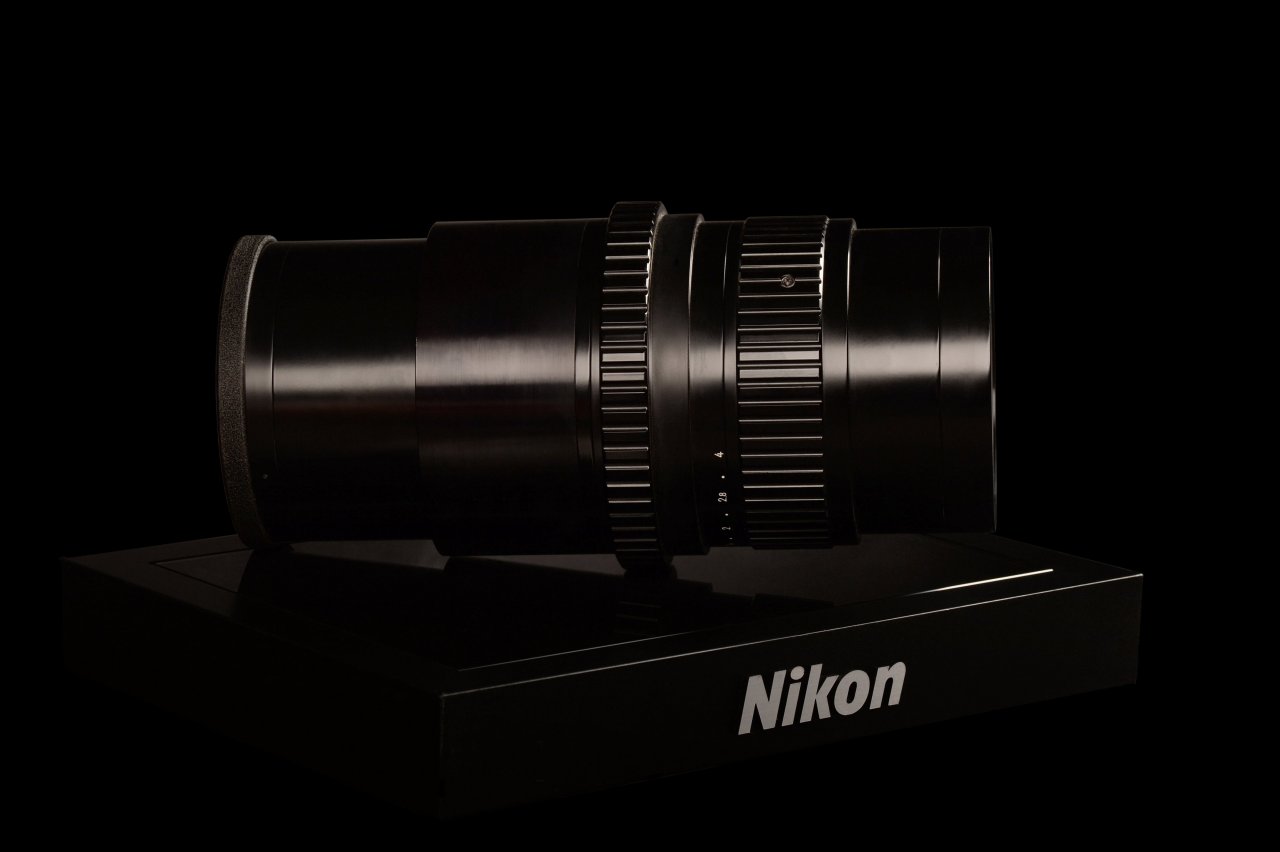
OPTICAL WEAPON
Nikon has developed and improved version of the former Nikon 1:1 Projection system (was originally based on 250mm f1 UMN lens) with this 300mm F1.4g Ultra Micro Nikkor Lens that has image area of at least 64mm diameter. This lens, with its matched illumination system, is the one which was offered in the United States. Ehrenreich Photo-Optical Industries did not sell this lens but several domestic manufacturer were interested in use of this lens.
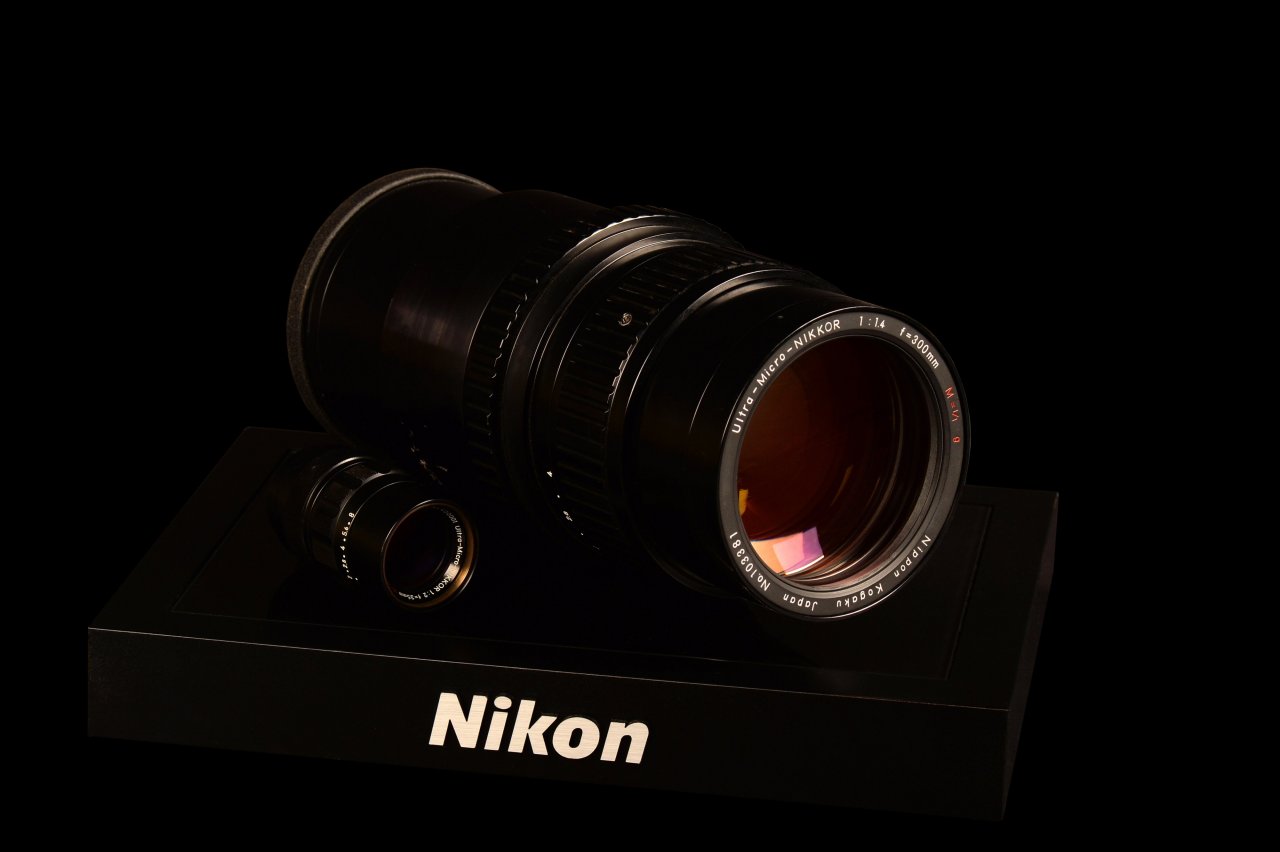
Heavy Metal Nikkor Lens
The lens has an object-to-image distance about half that of ordinary lenses, and also a smaller picture angle. The advantage of this second point is that the difference in image brightness between the center and edge if the field due to the forth power cosine law becomes smaller, and the magnification error is minimized even in cases where the wafer surface is not flat. When using a lens at 1:1 the effective aperture ratio becomes half of the nominal value, so a very fast lens is needed to obtain high resolution. To this end, Nikon succeeded in producing an F1 (250mm) and F1.4 (300mm) lenses with excellent optical performance. At 1:1 a symmetrical lens has the theoretical advantage of having no distortion, so Nikon placed the elements symmetrically on each side of the diaphragm. Gorgeous and Luxury Lens This lens diamond has adorable details from all observation angles. As you can see, on the detailed photos, it is a pure luxury to watch this precious beauty and feed the anxiety visual sensors.
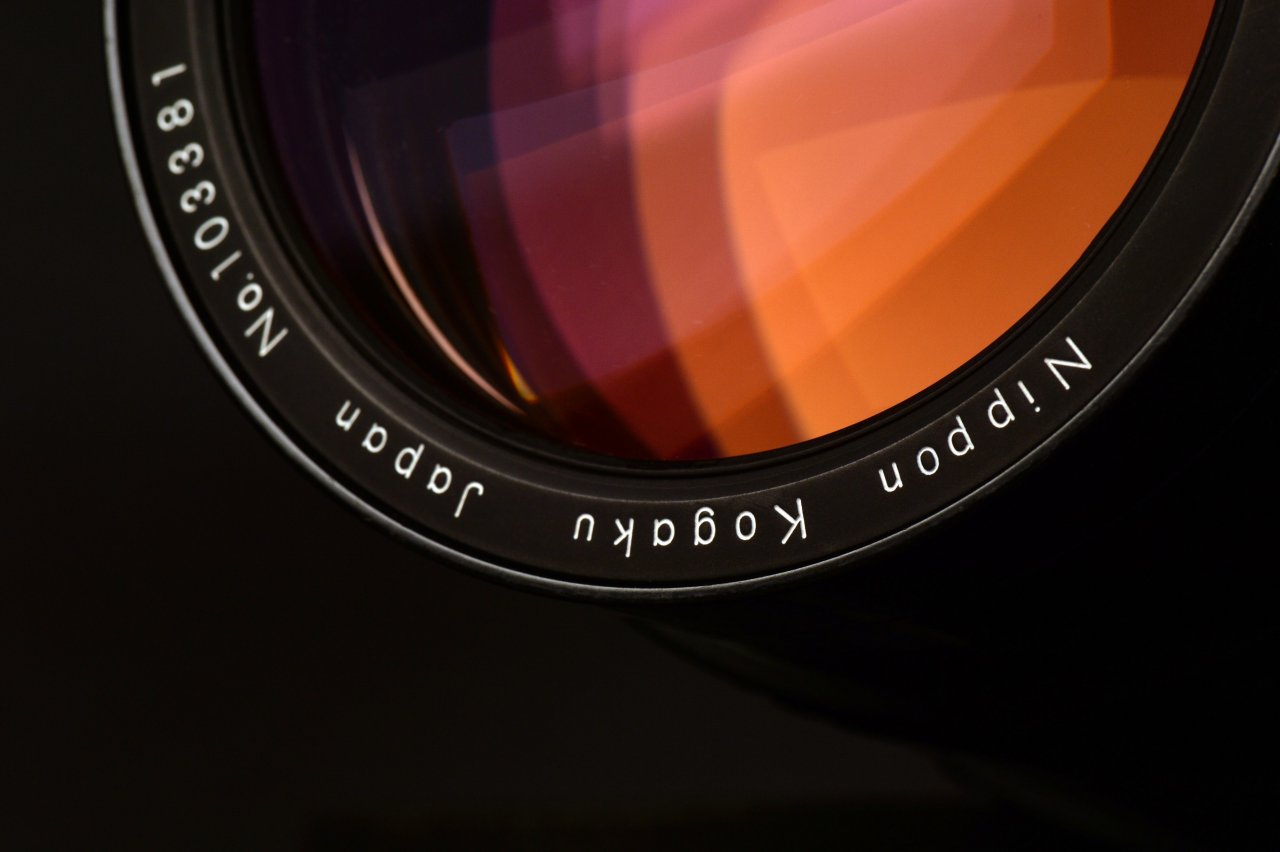
Gorgeous and Luxury Lens
Multilayer coatings on all 16 lens elements give the lens deep colorful darkness hideout when you try to see the inside of the lens.
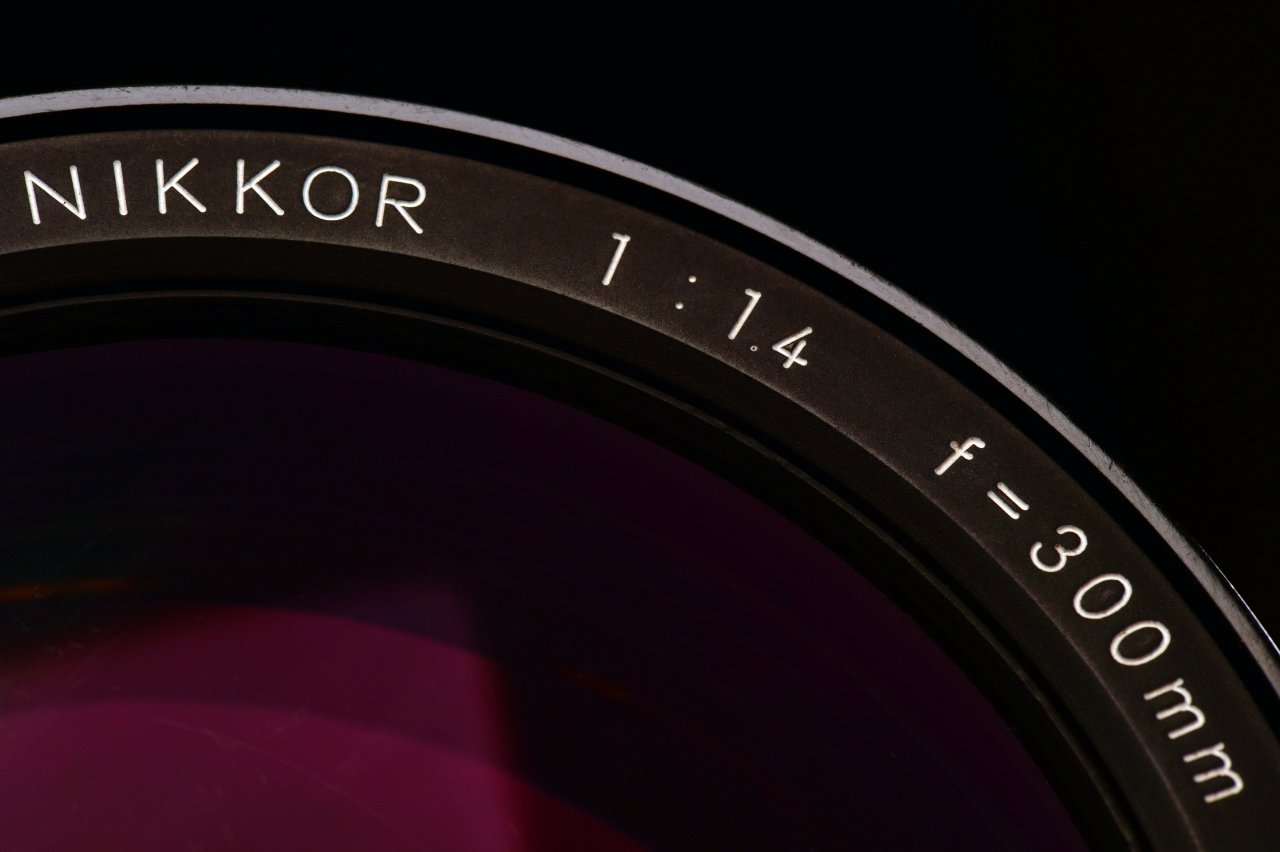
NIKKOR 1 : 1.4 f = 300 mm
Front element on the contrary shows its daring beauty that changes colors when you move around the lens.
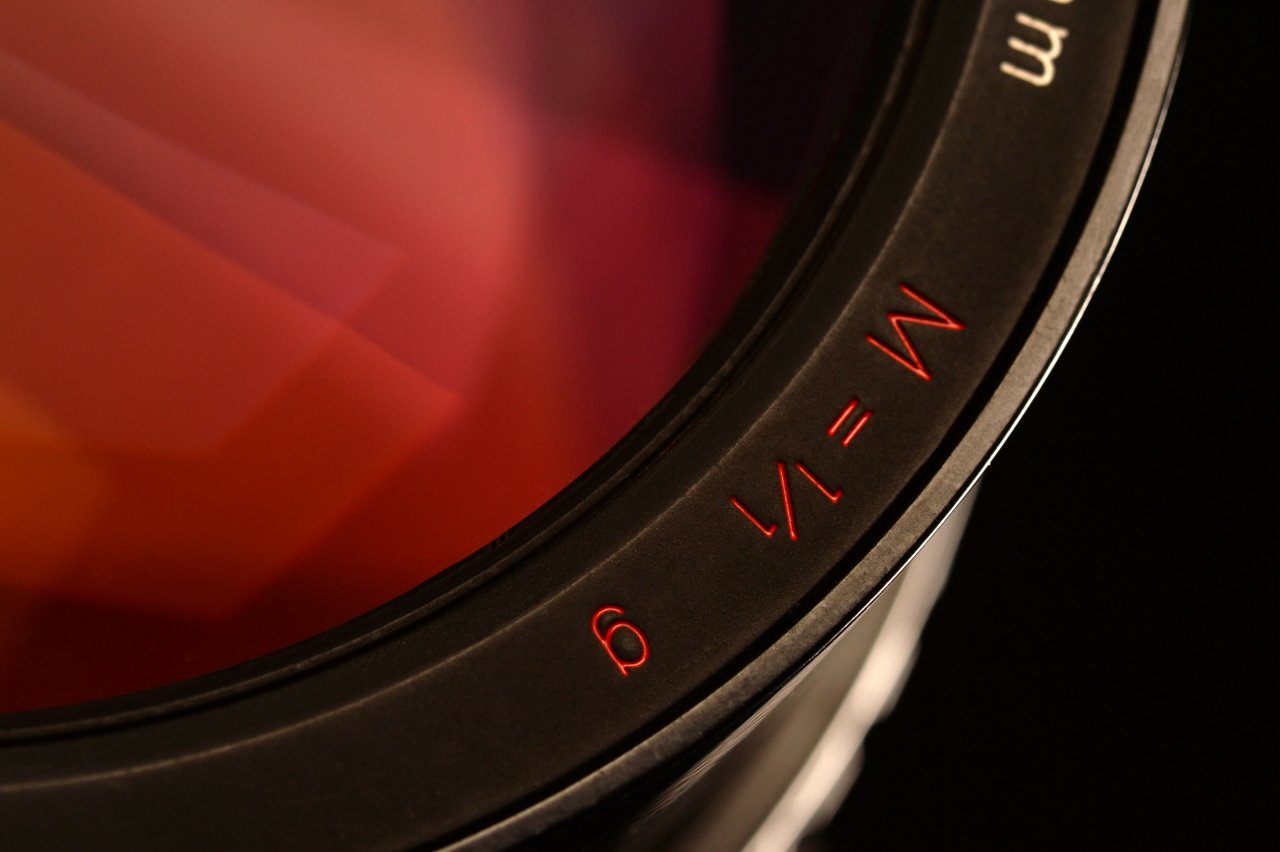
Red Engraving with
M = 1/1 g
Front and rear lens caps are made from metal and cover the exploding colors of the front and rear elements for the protection when not in use.
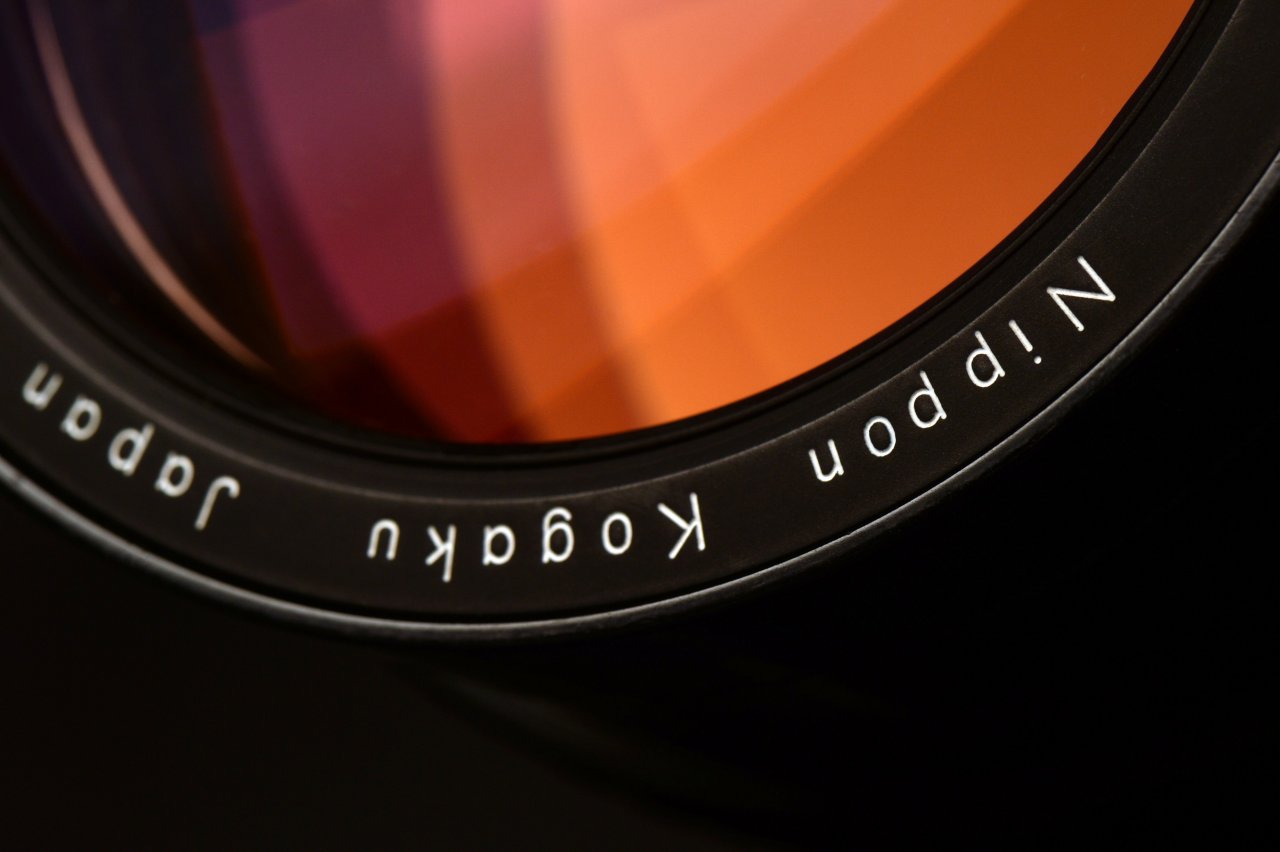
Nippon Kogaku Japan

Ultra Micro Nikkor 300mm F1.4g
Certificate Card This particular lens comes from United Kingdom and was discovered there after a decade of intensive search almost 14 years ago. Lens Certificate is signed by Chief Inspector Sagawa-san. Certificate that came with the lens has a different serial number, which is a sign, that at least 2 lenses were delivered to the same customer and the certificate must have been exchanged by accident there. These are the known serials :
No. 103381 ( This lens )
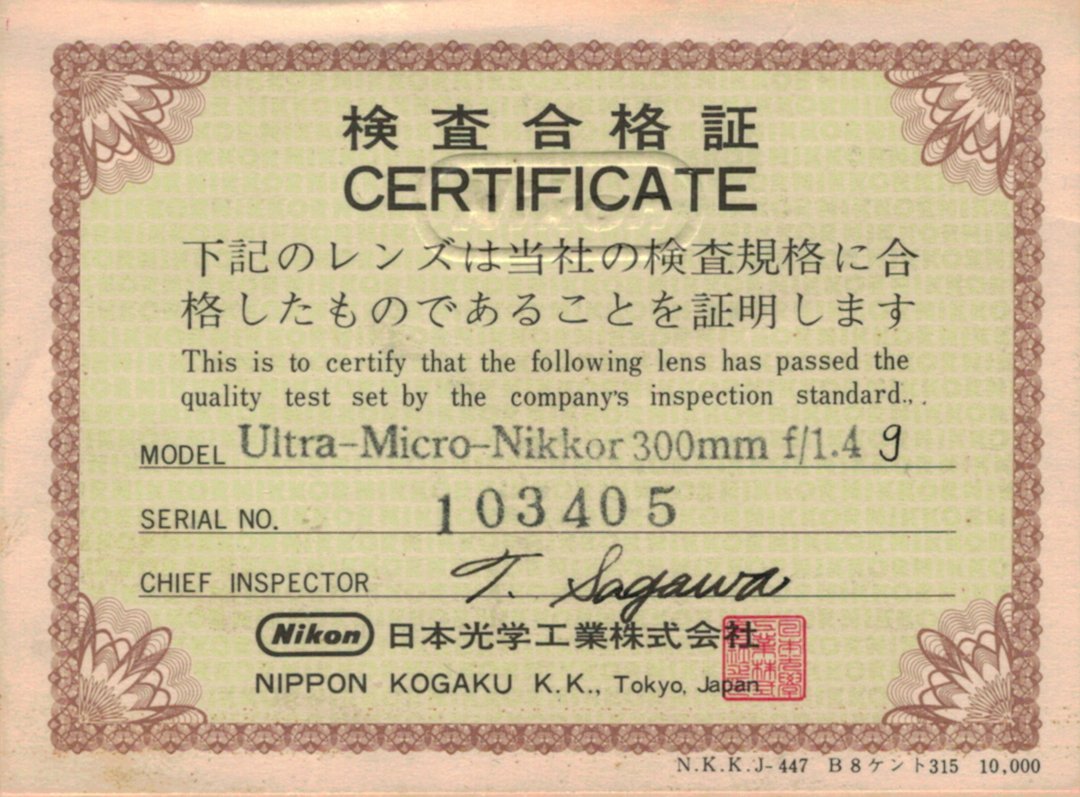
Signed by Chief Inspector Takeshi Sagawa
There is not much to tell in words about such extraordinary optical light rocket. One can only digest the artistic and colorful beauty shining from this optical UMN Emperor.
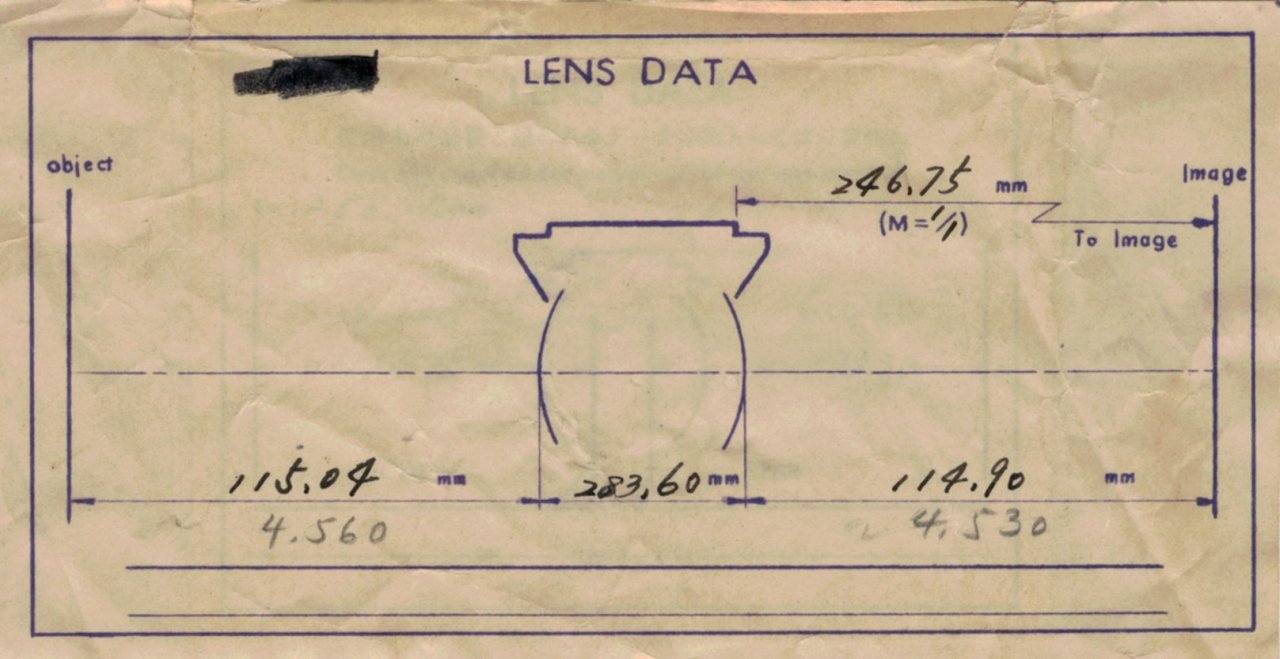
LENS DATA
Technical Data Projection system developed by Nippon Kogaku K.K. : Click on the image to enlarge it.
Copyright (c) Nippon Kogaku K.K. Diffraction theory : 1. Higher contrast can be obtained with coherent illumination than with the incoherent. The former has a flat response from zero to cutoff frequency, while the latter has decreasing response with increasing frequency. 2. The cutoff frequency ( i.e. maximum resolving power ) with the coherent illumination is only half that obtainable with incoherent illumination.
Nippon Koagku K.K. research people experimentally concluded
that coherent illumination is best for the projection system.
Satisfactory results were obtained using both positive and negative type resist.
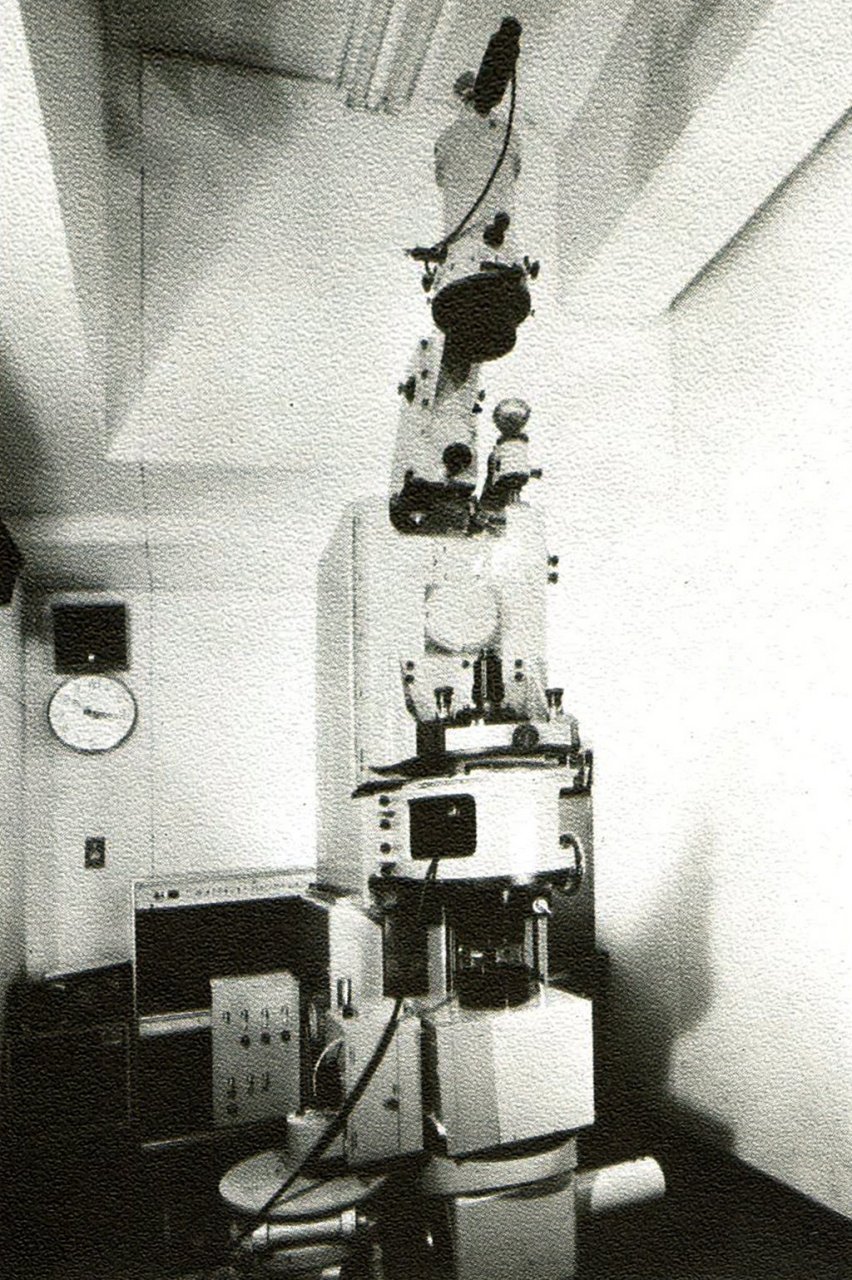
Test Device
Printing test with the projection lens were left to Dr. Zyun Koana,
Professor of Tokyo University, who also tested the other Ultra Micro Nikkor lenses.
In the tests Nikon emphasized improving the image contrast
and getting rid of unevenness of illumination on the image plane.
Specifications Ultra-Micro-Nikkor 300mm F1.4g
Focal length : 299.1 mm
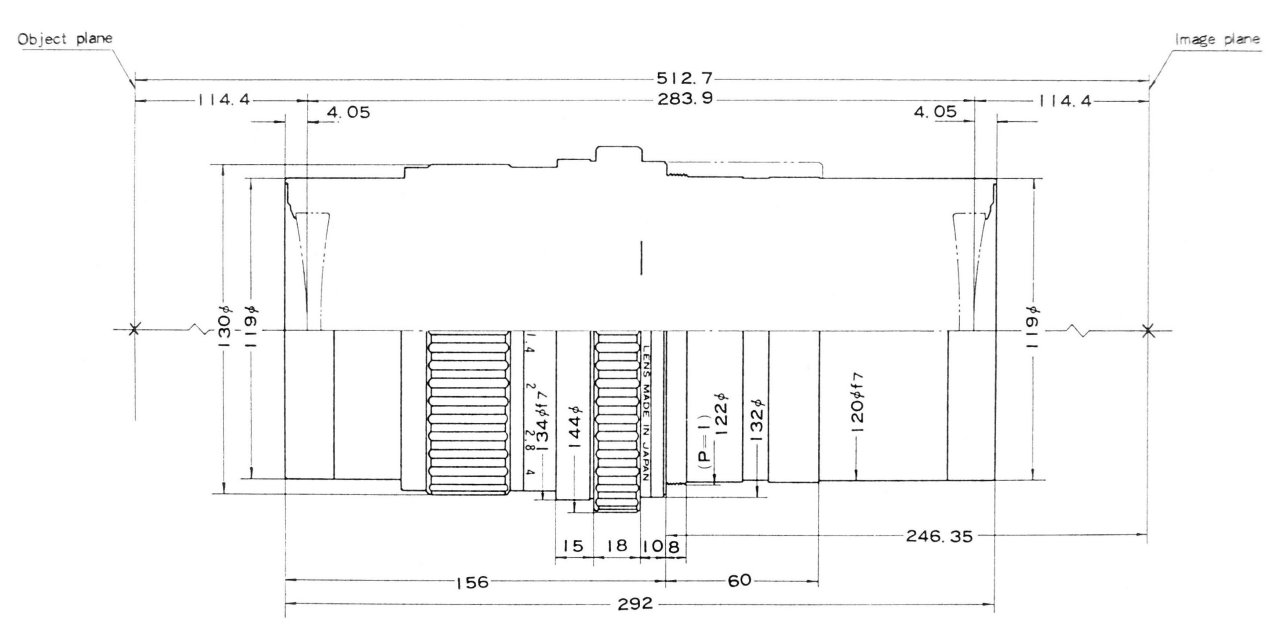
Ultra Micro Nikkor 300mm F1.4g Lens Construction Nikon Museum
Special Exhibition It was in 2018 that an awesome exhibition was held at the Nikon Museum in Tokyo. For more detailed reports, please refer to the UMN Nikon Museumn Report . The exhibition displayed large Ultra Micro Nikkor lenses, the same as Martin-san's lens. I would like to show you how it was. All images were taken at the Nikon Museum.
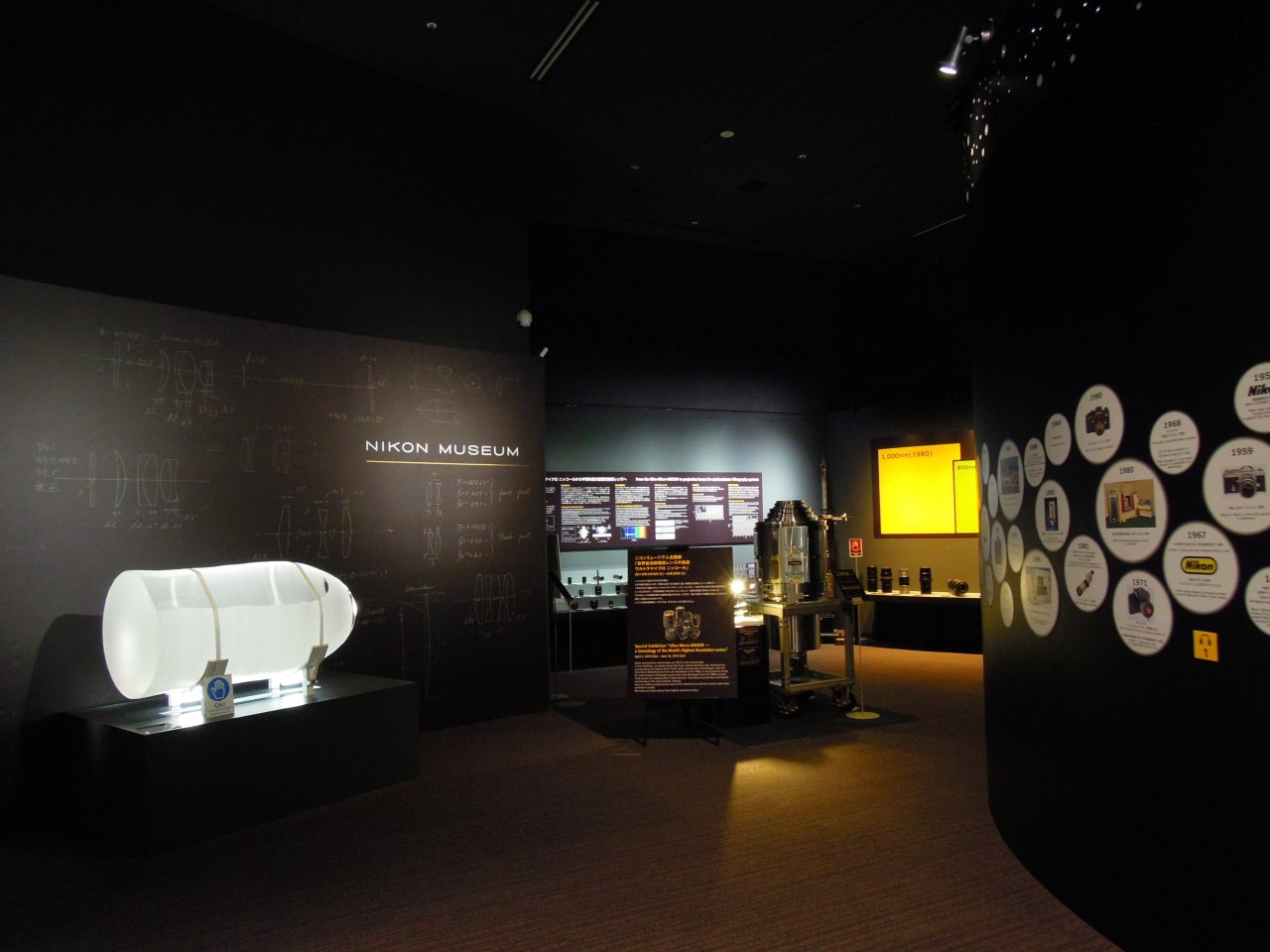
Nikon Museum Sjinagawa, Tokyo
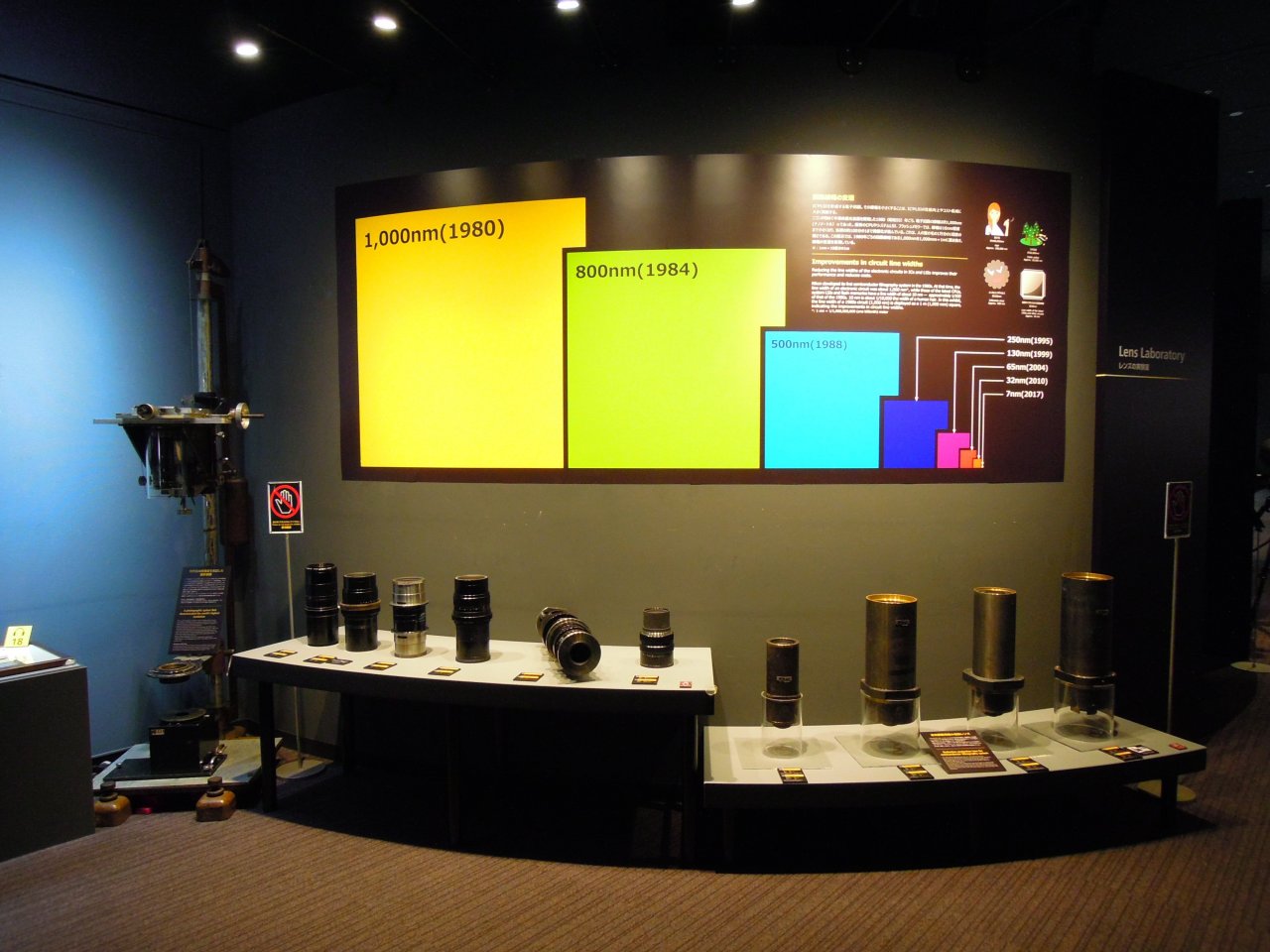
Ultra Micro Nikkor Lenses and Projection Lenses
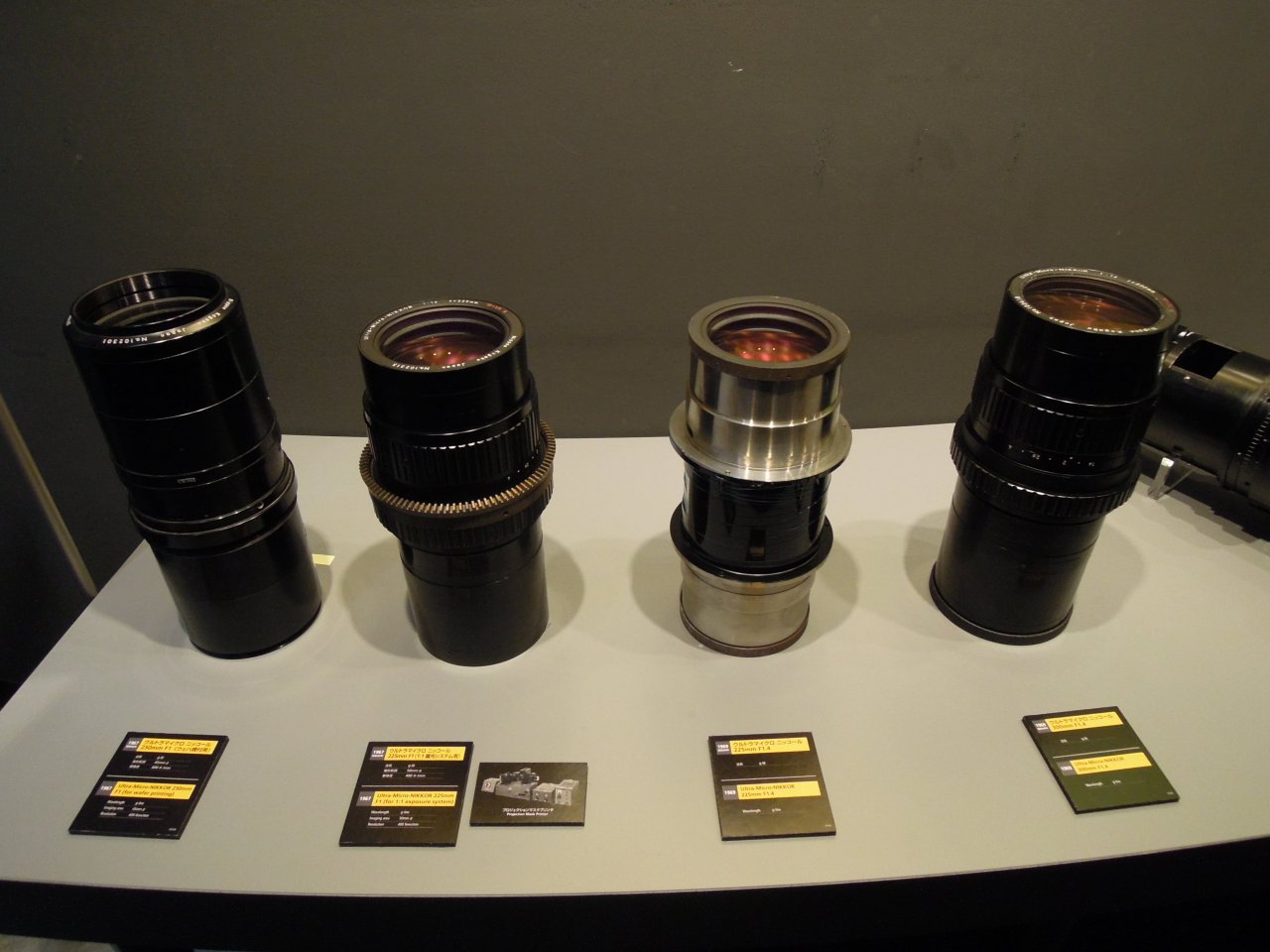
Big Ultra Micro Nikkor Lenses Family
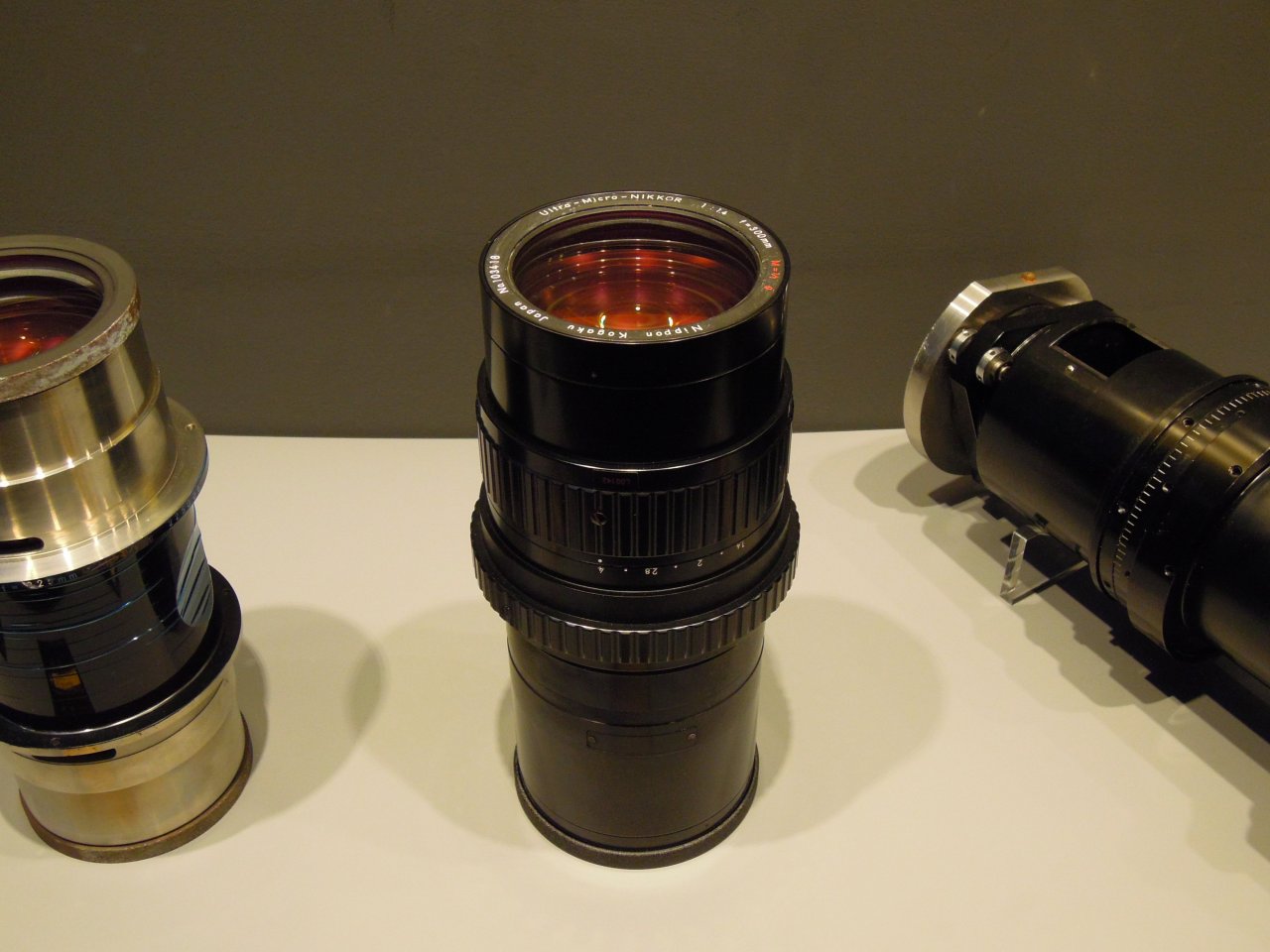
Ultra Micro Nikkor 300mm F1.4g, 1969
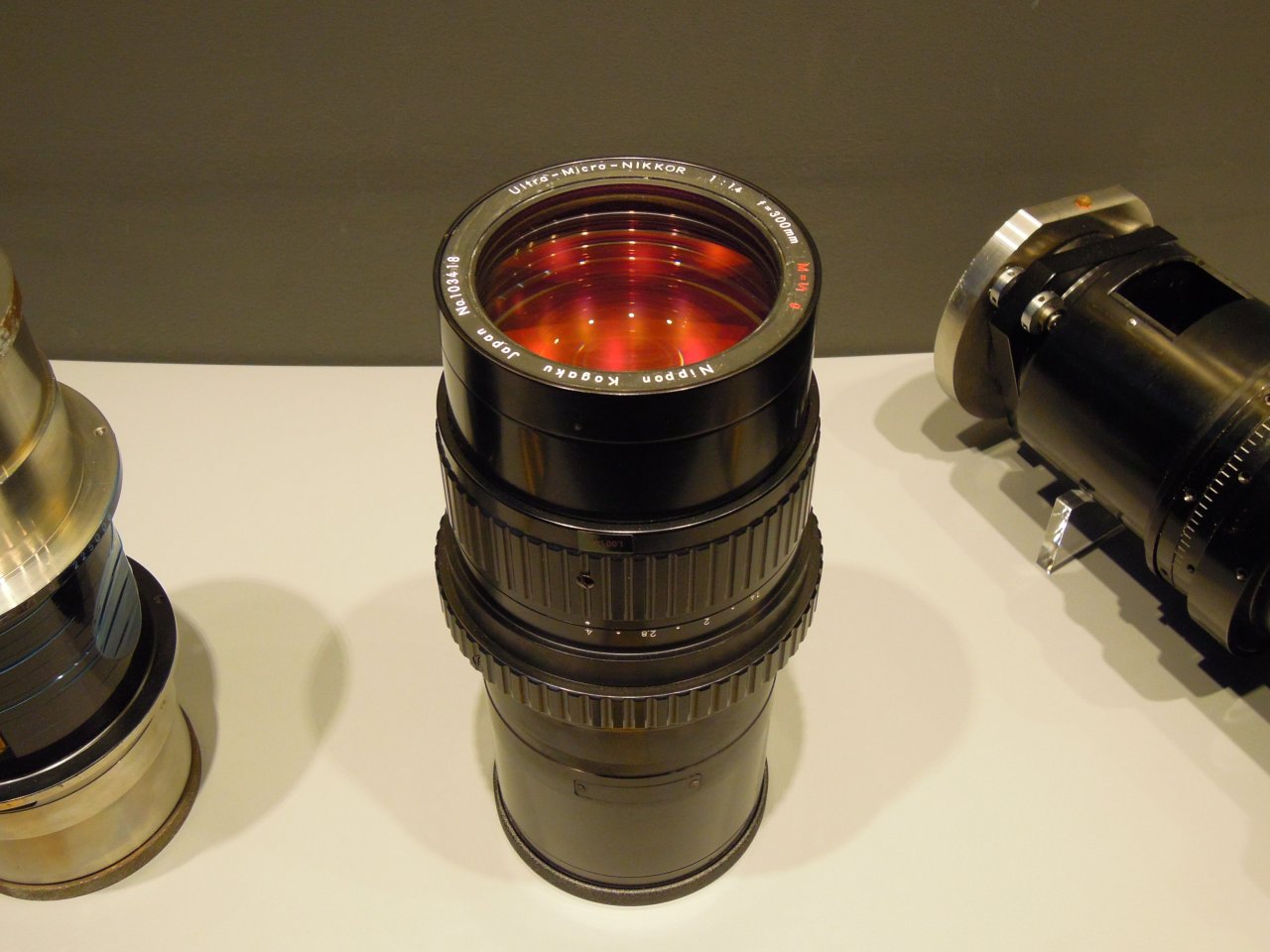
The Beauty of Industrial Nikkor Lenses
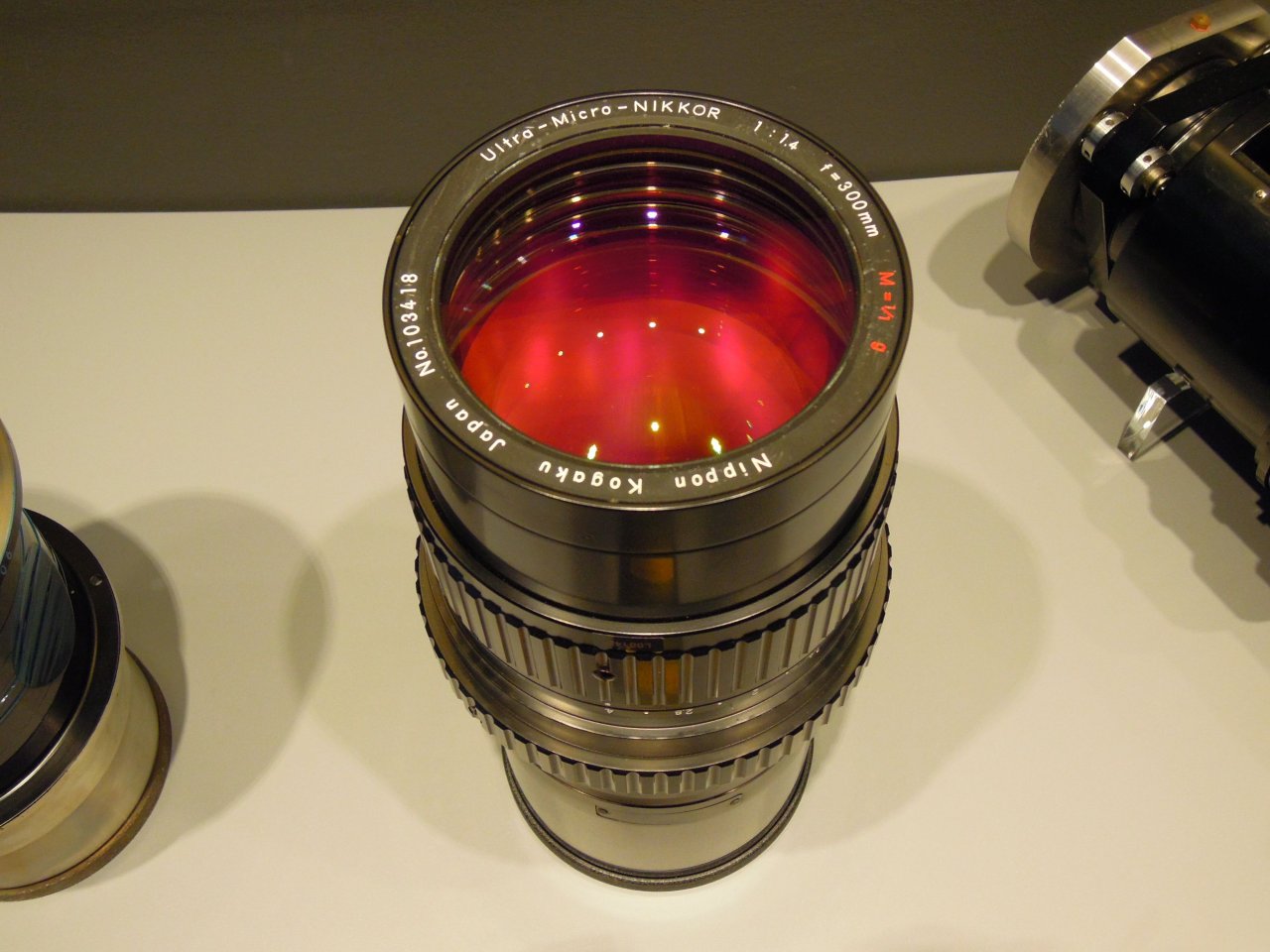
Charming Lens Coating
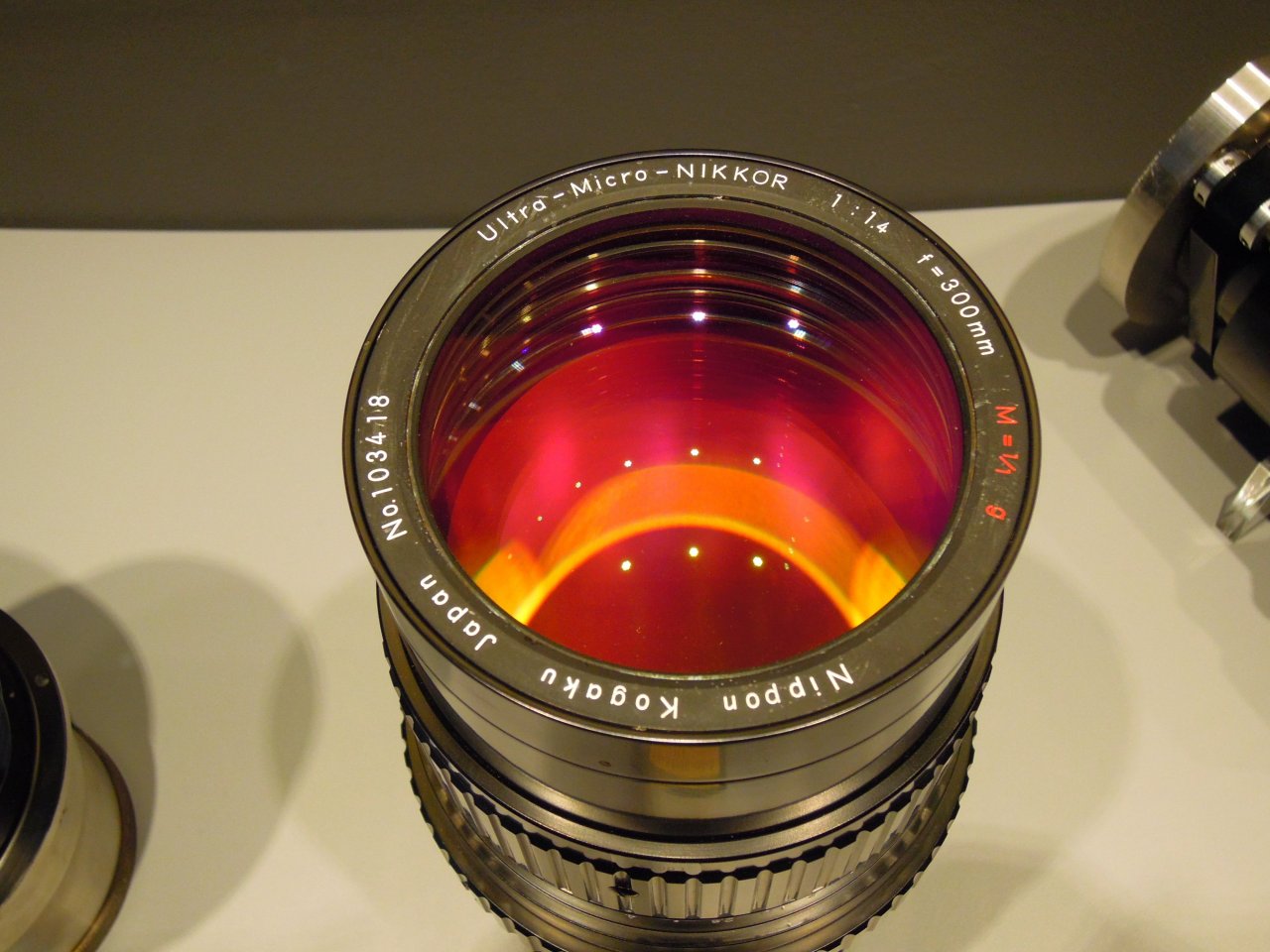
Rose Red Ruby Coating

Ultra Micro Nikkor 300mm F1.4g
References
1 : 1 PROJECTION SYSTEM FOR PRINTING ON PHOTORESIST
Nikon Industrial Lenses Sales Manual
Nikon Ultra-Micro-Nikkor Acknowledgments I would like to thank Mr. Martin Moravcik of the Slovak Republic for taking and providing many valuable images for this article. Thank you very much. Next Page Articles → Return to Chapter 0 Top Page Shortcuts
Chapter 0
Top Page
Martin's Special You can browse more of Martin's collection on this site.
Article 1
Nikon AS-1 Martin Collection
Copyright Michio Akiyama, Tokyo Japan 2021
|
